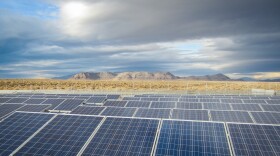-
National unemployment rates continue to go down, but county job numbers in the Mountain West are extremely mixed. For example, Idaho was the only state where every county had an increase in jobs between July 2019 and July 2022. And Nevada was one of very few where every county reported job losses.
-
Paul Martin, an administrator for the Wyoming Department of Corrections, said it’s challenging for prisons to compete with other jobs that pay more.
-
Public swimming pools across the Mountain West are facing lifeguard shortages. To address the problem, some agencies are offering hiring incentives.
-
A new report shows many states in the West have the largest solar energy industries relative to the size of their economies, with Nevada in the top spot.
-
Before the pandemic, restaurants accounted for nearly 10% of the state’s labor force. Since the pandemic began, restaurants and the workers who keep them running have been hit hard. An apprenticeship program is pairing young people looking to start a career in the food industry with restaurants looking for help.
-
Grocery store workers in the Denver area went on strike Wednesday after their union rejected the latest contract offer from a chain of stores owned by Kroger Co., the nation’s largest traditional grocery store chain.
-
The U.S. is in the midst of another COVID holiday season, and federal laws that offered COVID-related paid sick leave to workers have expired. Colorado, Los Angeles and Pittsburgh are among a small number of places that have put in place their own COVID protections, but many sick workers across the country must wrestle with difficult financial and ethical questions when deciding whether to stay home.
-
A new Brookings Institution analysis helps fill the data gap, finding that nearly 40% of Native Americans saw cuts in work hours or pay over the last year – higher than all other racial or ethnic groups.
-
Educators are exhausted these days. Schools in the Mountain West are dealing with extreme staff shortages that have been exacerbated by the pandemic.
-
An annual report from the Bureau of Labor Statistics shows the gender wage gap in the United States held steady during the pandemic, with women working full-time jobs only making, on average, 82.3% of what their male counterparts do. The disparity, which has hovered around 82% for the last decade, is even more pronounced in many Western states.

Play Live Radio
Next Up:
0:00
0:00
Available On Air Stations










